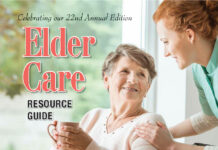By Dr. Robert Mario
Many people suffer from hearing loss. In fact, the latest available statistics show that over 10 percent of the U.S. population reports difficulty hearing. That’s over 31.5 million people. And as the baby boomer generation continues to age, that number promises to increase dramatically.
Are you are one of those millions of people who do not hear as well as they once did? If so, you are certainly not alone. Consider these statistics reported by Sergei Kochkin, Ph.D., executive director of the Better Hearing Institute:
•Three in 10 people over age 60 have hearing loss;
•One in six baby boomers (ages 41-59), or 14.6 percent, have a hearing problem;
•One in 14 Generation Xers (ages 29-40), or 7.4 percent, already have hearing loss;
In addition, studies have linked untreated hearing loss to emotional, physical, mental, psychological and even economic disadvantages.
Causes of hearing loss
There are several causes of hearing loss with “exposure to noise” ranking high among the reasons. The primary causes of hearing loss are: Exposure to noise, medicine, aging process, disease and head trauma.
Types of hearing loss
Not all hearing loss is corrected through the use of hearing aids or alternative listening devices.
There are four types of hearing loss:
•Conductive — This could be caused by something as simple as earwax buildup.
•Sensorineural — This is caused when tiny hairs in the cochlea are missing or damaged.
•Mixed — This is a combination of conductive and sensorineural hearing loss.
•Central — Strokes and central nerve diseases are often the cause of this type of hearing loss.
To discover your hearing abilities, hearing specialists use the following methods:
•Otoscopy — Looking into your ears by using an otoscope. This instrument is used to see the ear canal and the ear drum and whether or not there is ear wax obstructing the canal.
•Puretone audiometry — Using headphones and a bone oscillator that are connected to an audiometer over your ears. The audiometer transmits a series of tones at a variety of volumes into your ears to determine the exact point or “threshold” at which you can hear various frequencies of sounds. When you hear a sound, you will be asked to push a button or raise your hand.
•Speech audiometry — During this test you will listen to a series of one and two syllable words at different volumes and be asked to repeat them. This will determine the level at which the patient cannot only detect, but understand speech.
•Speech in noise test — This test will determine how well you hear in a noisy environment.
•Review results — The results of your tests will be recorded on a graph called an audiogram, which your specialist will review with you.
Learn more about the benefits of hearing aids and hearing aid technology by contacting your hearing specialist and being evaluated.
Dr. Robert Mario, PhD, BC-HIS, is the director of Mario Hearing and Tinnitus Clinics, with locations in West Roxbury, Cambridge and Melrose. He can be reached at 781-979-0800 or visit their website, www.mariohearingclinics.com. Archives of articles from previous issues can be read at www.fiftyplusadvocate.com.












